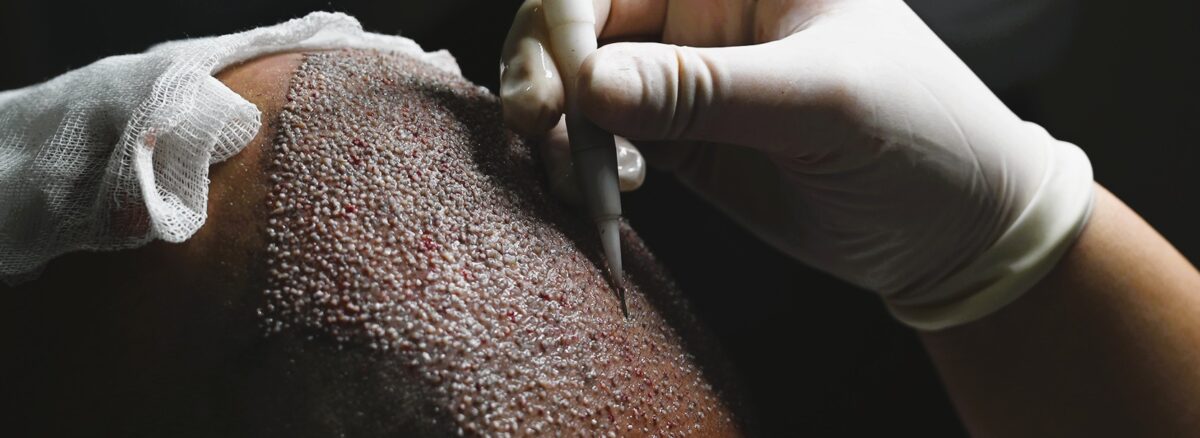For individuals struggling with hair loss, a hair transplant represents not only an aesthetic enhancement but also a significant psychological transformation. One of the most common questions asked is: which hair transplant method is more effective? Among the modern techniques, Sapphire FUE and DHI hair transplant have become the most popular options in recent years. So, what are the main differences between these two methods? Which one is more suitable for you? And most importantly, how does choosing the right clinic affect your results?
In this guide, we will break down the technical differences between both methods and explain how we at Hairpol provide personalized approaches for each patient. We will also clarify frequently asked topics such as graft placement, natural hairline design, post-transplant recovery, and shaven vs unshaven procedures.
What Is Sapphire FUE?
Sapphire FUE (Follicular Unit Extraction) is an advanced version of the classic FUE technique, performed using sapphire-tipped blades. These special tools allow channels to be opened with greater precision and minimal tissue damage. As a result, healing is faster and the transplanted hair grows in a more natural direction.
Advantages of Sapphire FUE:
- Minimally invasive procedure with reduced tissue trauma
- Faster recovery period
- Enables denser graft placement
- High success rate in achieving a natural hairline
- Ideal for patients with large balding areas
At Hairpol, we recommend this method particularly for patients who require a high number of grafts and desire natural density. Our goal is not just to implant hair. It is to create a personalized, aesthetic result.

What Is the DHI Method?
DHI (Direct Hair Implantation) involves extracting hair grafts and immediately implanting them into the scalp using special implanter pens. The key difference in this method is that channel opening and graft placement occur simultaneously.
Advantages of DHI Hair Transplant:
- Suitable for working between existing hair
- Allows for denser implantation
- Offers unshaven procedures for limited areas
- Ideal for hairline refinement and density increase
- Less bleeding and a faster, more comfortable recovery
This technique is generally preferred by patients seeking increased density in smaller or specific areas. However, DHI may not be suitable for everyone. Factors such as hair type, donor density, and patient expectations must be carefully evaluated.
Which Method Is More Successful?
There is not a single best method. Success depends on selecting the right technique for each individual. At Hairpol, we personalize every step from the initial hair analysis onward. Based on your age, hair type, degree of hair loss, donor capacity, and aesthetic goals, we determine which approach will yield the best outcome for you.
At Hairpol, Our Process Includes:
- Free online consultation and preliminary evaluation
- Detailed hair analysis conducted by expert doctors
- Personalized hairline design
- Choosing the right technique (Sapphire FUE or DHI)
- Hair transplantation in a medically equipped, sterile environment
- Comprehensive post-operative care and follow-up
Graft Placement and Hairline Design
In both techniques, graft placement must follow the natural direction and angle of hair growth. This is crucial to avoid an artificial, unnatural appearance. In particular, the front hairline design should be tailored to the patient’s facial features and age.
The Hairpol team consists of specialists trained in aesthetic hairline design. Our focus is not just on achieving growth. It is about ensuring natural, lasting results.
Healing Process and Results
With the Sapphire FUE technique, recovery generally takes 7 to 10 days, with redness and scabbing subsiding quickly.
In the DHI method, healing can be even more comfortable since it causes less trauma to the tissue.
However, with both methods, patients typically experience shock shedding within the first 3 months, which is normal and temporary. Permanent hair growth begins after this stage, and final results are usually visible between 9 and 12 months.
Is Unshaven Hair Transplant Possible?
Unshaven hair transplant is most commonly performed using the DHI technique, although it is typically limited to smaller areas. For full-head procedures, shaving the donor area is generally unavoidable.
At Hairpol, we evaluate patients requesting unshaven transplants with realistic expectations, assess feasibility, and recommend the most suitable method accordingly.
Technology and Hygiene at Hairpol
At Hairpol, our focus extends beyond medical excellence. We also prioritize patient comfort and safety. All hair transplant procedures are performed:
- In sterile operating rooms
- Using single-use surgical instruments
- With advanced micromotor systems
- Under strictly monitored hygiene protocols
A Hair Transplant Is More Than Just a Procedure
A hair transplant is not just a few-hour operation. It is a long-term transformation journey. At every stage, it is essential to provide transparent information, answer questions, and offer psychological support when needed.
At Hairpol, we provide 24/7 communication, a comprehensive aftercare kit, personalized washing training, and months of follow-up support for every patient.
Which Method Is Right for You?
Sapphire FUE or DHI?
The real question is: Which technique best fits your hair type and expectations?
That is the question we answer together at Hairpol. Every patient is different, and every hair transplant is unique. With accurate analysis, expert care, and ethical medical standards, achieving your ideal look is absolutely possible.
Remember, a hair transplant is not just a cosmetic procedure. It is the key to restoring your confidence. And we at Hairpol are proud to walk this journey with you.
What is the main difference between Sapphire FUE and DHI?
Which technique provides a more natural hairline?
Both methods can create a natural hairline when performed by an experienced team. However, DHI allows more precise placement in very small or delicate areas, making it ideal for hairline refinement or minor density improvements.


